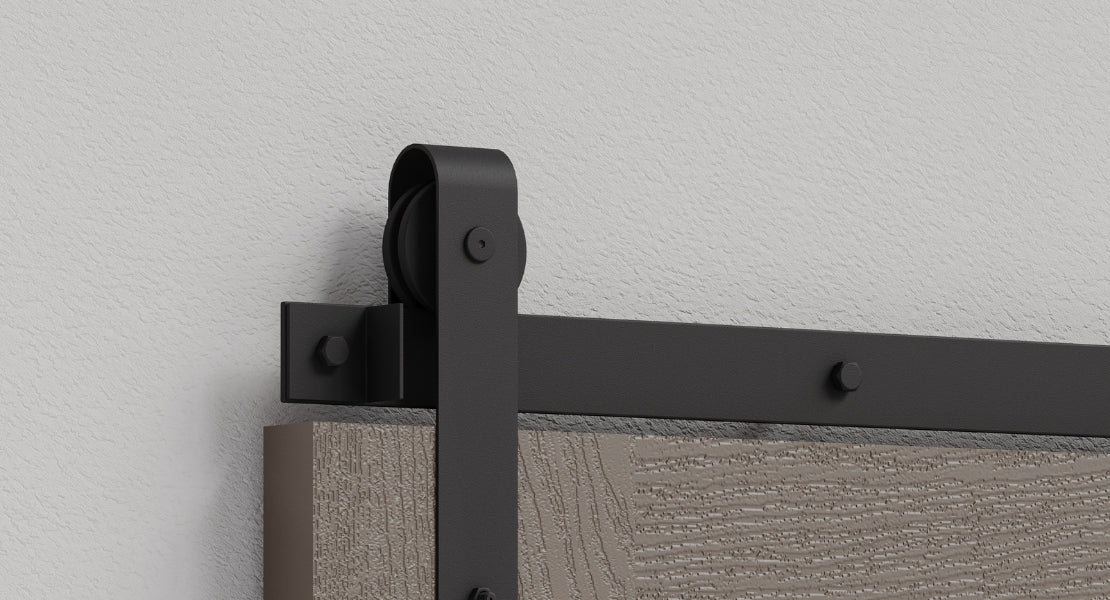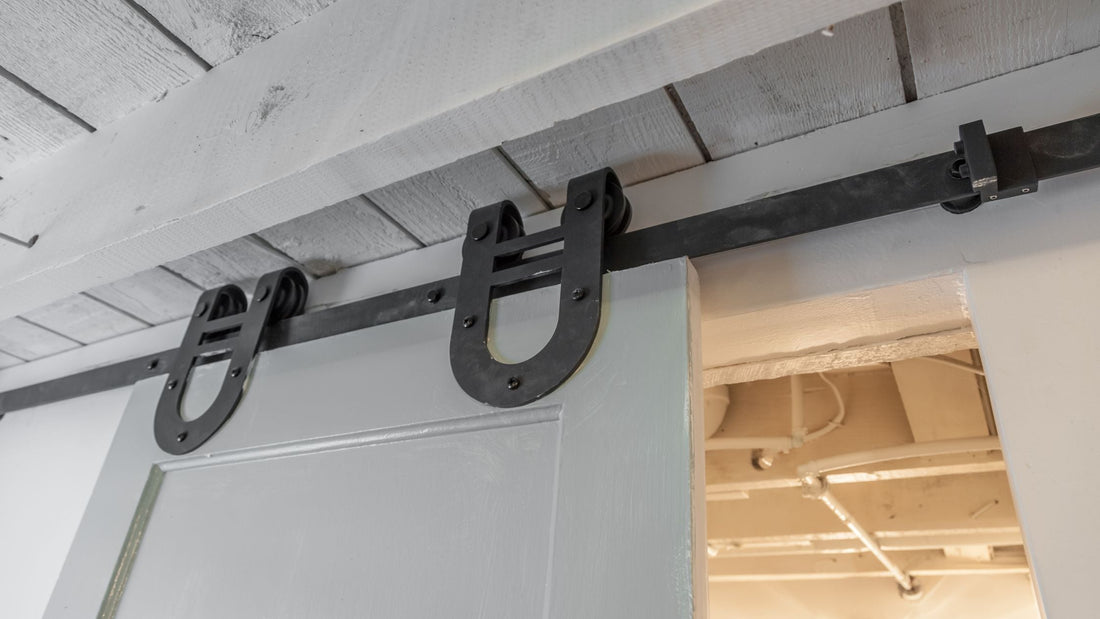
Sliding Door Track and Hardware Guide: Your 2025 Handbook
Curious how sliding door track and hardware can completely transform your home or office in 2025? You are in the right place. This guide will give you everything you need to confidently choose, install, and care for your sliding door track and hardware, no matter your space or style.
We will walk through the most popular types, step-by-step installation, troubleshooting tips, the latest design trends, and expert advice tailored for 2025. Get ready to discover the space-saving magic, sleek looks, and practical benefits of sliding doors. Let us help you unlock a new level of style and functionality for your interiors.
Understanding Sliding Door Tracks and Hardware
Sliding door track and hardware are at the heart of every smooth-gliding, space-saving door system. But what exactly makes up these essential features? Let’s break down the basics and explore why they are a game-changer for modern interiors.
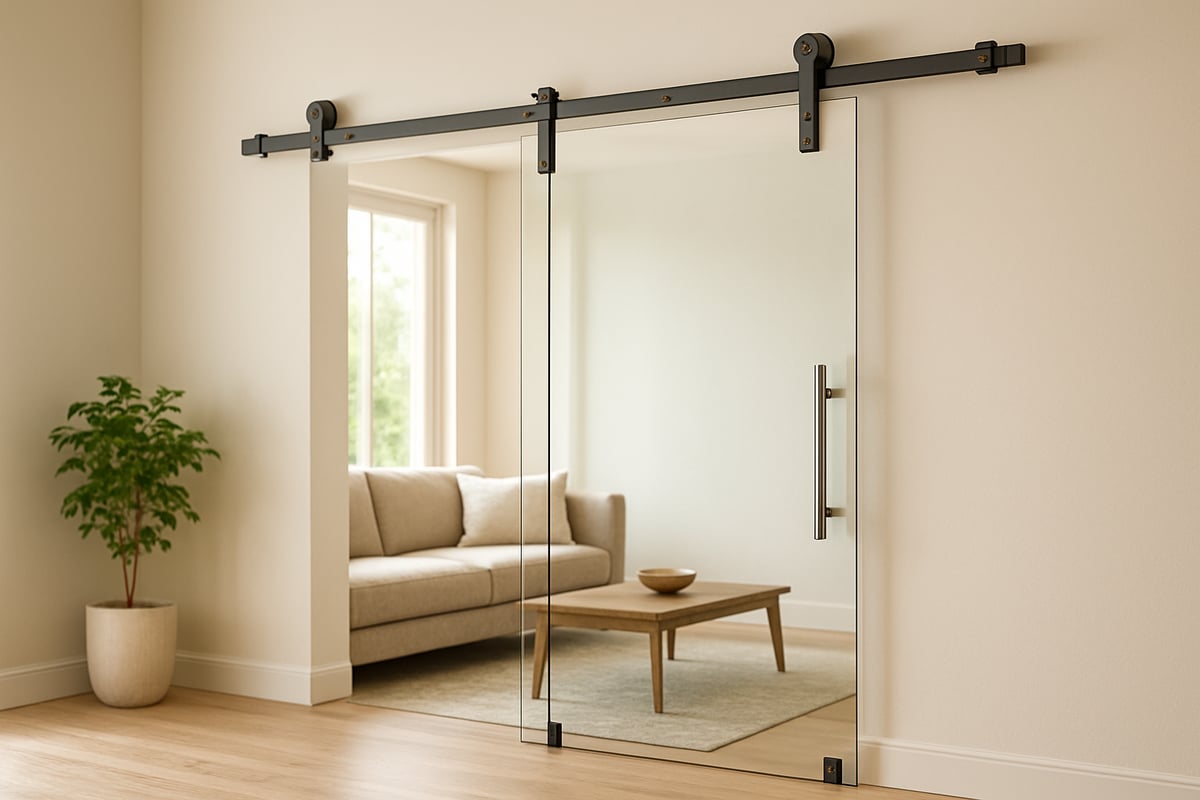
What Are Sliding Door Tracks and Hardware?
When people mention sliding door track and hardware, they are talking about the system that guides a door along a set path. The core components include tracks, rollers, brackets, stoppers, and handles. Tracks are mounted above or below the doorway and serve as the pathway for the door’s movement. Rollers attach to the top or bottom of the door, allowing it to glide smoothly along the track. Brackets secure the track to the wall or ceiling, while stoppers prevent the door from sliding too far. Handles and pulls add both function and style.
Unlike traditional hinged doors that swing open, sliding door track and hardware enable the door to move parallel to the wall. This setup not only saves space but also adds a modern touch to any room. The hardware also plays a vital role in stability and can enhance the door’s overall appearance.
Types of Sliding Door Systems
There are several types of sliding door track and hardware systems available, each with its own strengths. Common options include single sliding doors, double sliding doors, bypass systems, pocket doors, and barn door setups. Single systems are perfect for standard entries, while double setups allow two panels to slide in opposite directions. Bypass systems let multiple doors slide past each other, making them ideal for closets or pantries. Pocket doors disappear into the wall cavity, a smart solution for tight spaces. Barn door systems are popular for their rustic charm and versatility.
If you are researching the best options, the Barn Door Hardware Kits Collection offers a wide range of kits for different needs and styles. Each type of sliding door track and hardware system is designed for specific scenarios, so consider your space and usage before choosing.
Materials and Finishes
The choice of materials in sliding door track and hardware affects everything from durability to aesthetics. The most common materials are steel and aluminum. Steel is prized for its strength and longevity, making it perfect for heavy doors. Aluminum is lightweight and corrosion-resistant, ideal for modern designs.
Finishes like matte black and brushed nickel are trending for 2025, offering a sleek or industrial vibe. Always think about maintenance, as certain finishes resist fingerprints or scratches better than others. When selecting sliding door track and hardware, weigh both style and practicality.
Key Hardware Components Explained
Every sliding door track and hardware system relies on a handful of crucial parts. Rollers are the unsung heroes, ensuring the door glides quietly and effortlessly. Floor guides keep the door stable and prevent swinging. Stoppers set the limits, stopping the door from coming off the track. Handles and pulls come in various shapes, adding comfort and flair to the setup.
Soft-close mechanisms are a premium upgrade, preventing slamming and extending the hardware’s lifespan. Security features such as locks and anti-jump disks offer extra peace of mind, especially in homes with children or in commercial settings. High-quality sliding door track and hardware ensures longevity, security, and smooth daily use.
Benefits of Sliding Door Track Systems
Why are sliding door track and hardware solutions so popular in 2025? First, they save considerable floor space compared to swinging doors—up to 10 square feet per door. This makes them perfect for small rooms, open concept areas, or anywhere you want a streamlined look. Accessibility is another major win, as sliding doors are easier to operate for people with mobility needs.
On top of that, sliding door track and hardware provide unmatched design flexibility. With so many styles and finishes, you can match any interior theme, from ultra-modern to farmhouse chic. These systems enhance room flow and allow natural light to move freely, making spaces feel larger and brighter. If you want a stylish, practical, and future-ready solution, sliding door track and hardware are a top choice.
Choosing the Right Sliding Door Track and Hardware for Your Space
Ready to transform your space with the perfect sliding door track and hardware? Choosing the right system can make all the difference in how your doors look, feel, and function. Let’s break down the steps so you can confidently select the best option for your home or project.

Assessing Your Space and Needs
Before you dive into styles or finishes, start with a careful assessment. Measure your doorway’s width, height, and the available wall or ceiling space for mounting the sliding door track and hardware. Is there enough room for the door to slide open fully?
Consider the door material and weight. Heavy solid wood doors need sturdier tracks and rollers, while lighter panels might work with standard kits. Also, think about who will use the door. Do you need ADA-compliant options for accessibility, or soft-close features for safety in homes with kids?
Making a checklist helps:
- Measure twice for accuracy.
- Note wall obstructions like light switches or vents.
- Identify if a single or double door is needed.
By getting these basics right, you’ll set yourself up for a smooth installation and long-term satisfaction with your sliding door track and hardware.
Comparing Track Types and Mounting Options
Now, let’s talk about mounting. Will your sliding door track and hardware be wall-mounted or ceiling-mounted? Wall-mounted tracks are common, but ceiling-mounted tracks are ideal for open-concept spaces or when wall support is limited. If you’re considering a minimalist look or have unique room layouts, check out Ceiling-Mount Track Solutions for inspiration.

Surface-mounted tracks are visible and often used for barn doors, while recessed or pocket systems hide the track for a cleaner appearance. Double and bypass systems are great for wide openings or closets, while pocket doors slide right into the wall—perfect for tight spaces.
Think about:
- The look you want: exposed or concealed hardware?
- Structural support: studs in the wall or ceiling?
- Door function: single, double, or bypass?
Matching the mounting style to your needs ensures your sliding door track and hardware works seamlessly in your space.
Style and Aesthetic Considerations
Choosing sliding door track and hardware isn’t just about function—it’s about style, too. Are you aiming for a modern, rustic, or industrial vibe? Matte black tracks pop in contemporary interiors, while rustic bronze or brushed nickel suit traditional or farmhouse looks.
Customization is on the rise for 2025. Decorative hardware, colored tracks, and even minimalist designs with concealed hardware are trending. Don’t be afraid to mix and match finishes or add unique handles to reflect your personality.
Style tips:
- Match hardware finish to other accents in the room.
- Consider minimalist tracks for a sleek, modern feel.
- Use decorative brackets for a bold statement.
Let your sliding door track and hardware complement your décor and express your taste.
Durability and Load Capacity
Durability matters, especially if your door is heavy or will see daily use. Check the weight rating for both the track and rollers. Most standard sliding door track and hardware kits support 150–300 lbs, but heavy-duty options are available for oversized doors.
Compare materials like steel, aluminum, and wood. Steel tracks are robust for frequent use, while aluminum is lightweight and corrosion-resistant.
Always choose sliding door track and hardware that matches your door’s weight and use patterns for lasting performance.
Budget and Value Factors
Finally, let’s talk budget. Sliding door track and hardware kits can range from $75 to $400 or more, depending on the material, finish, and special features. Bundled kits often provide better value and ensure compatibility, while buying components separately allows for more customization.
Balance cost with quality. Look for warranties and read reviews to avoid flimsy hardware that might fail early. Investing a bit more upfront in durable sliding door track and hardware pays off in fewer headaches down the road.
To save money:
- Bundle kits for discounts.
- Compare warranties.
- Prioritize features that matter most for your space.
With a thoughtful approach, you’ll find sliding door track and hardware that fits your budget and elevates your home.
Step-by-Step Installation Guide for Sliding Door Tracks and Hardware
Ready to tackle your sliding door track and hardware project? With the right tools, prep, and a bit of patience, you can transform any doorway into a modern, space-saving feature. Let’s break down the process so you can install your new system with confidence.
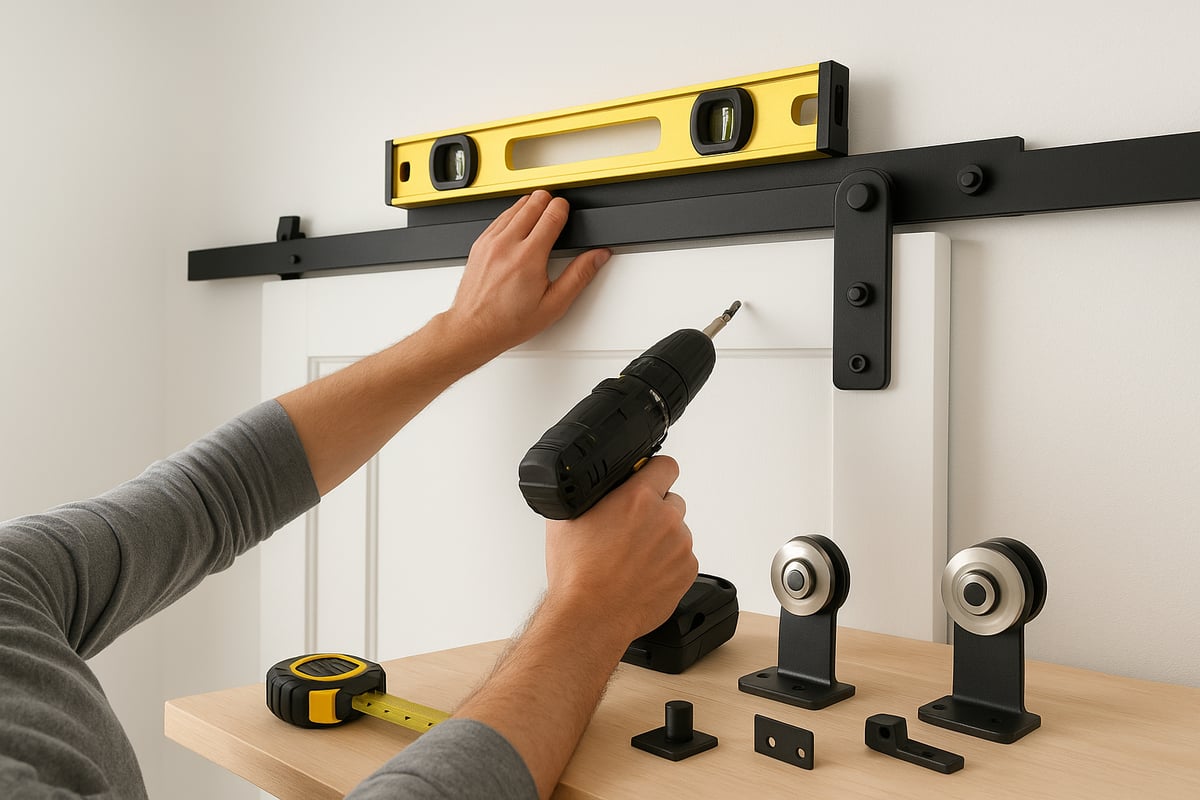
Tools and Materials Checklist
Before you dive in, gather all the essentials. Having everything on hand makes installing sliding door track and hardware much smoother.
You’ll need:
- Power drill and drill bits
- Level (preferably a long one)
- Measuring tape
- Screwdriver set
- Wall or ceiling anchors
- Pencil or marker for marking
- Stud finder (for wall-mounted tracks)
- Safety glasses
Typical sliding door track and hardware kits include:
- Door track (cut to size)
- Rollers and brackets
- Spacers and stoppers
- Floor guide(s)
- Mounting screws and anchors
- Handles or pulls
Double-check your kit to make sure no pieces are missing. Most kits come with an instruction manual—keep it nearby for reference.
Preparing the Opening and Surface
Start by measuring your doorway and surrounding wall space. Mark the track’s location above the opening, ensuring you have enough space for the door to slide fully open without hitting anything.
Use a stud finder to locate wall studs or ceiling joists. Proper support is crucial for safely mounting sliding door track and hardware. If studs don’t align with your planned track position, use heavy-duty anchors rated for the door’s weight.
Clear the area of obstructions, like trim, switches, or outlets. Wipe down the wall or ceiling to remove dust and debris—this helps the hardware sit flush and secure.
Installing the Track
Now it’s time for the main event: securing the track. Position the track on your marked line, making sure it’s perfectly level. Use a pencil to mark the bracket hole locations.
Drill pilot holes at each mark. This prevents wall damage and makes it easier to drive in screws. Attach the brackets to the wall or ceiling, then set the track in place and secure it with the provided hardware.
For long or heavy tracks, get a friend to help hold it steady. Double-check for levelness before tightening all screws. The track is the backbone of your sliding door track and hardware, so take your time on this step.
Attaching Rollers and Hanging the Door
Let’s get rolling—literally. Fix the rollers to the top of your door panel using the screws and brackets from your kit. Placement is key; align them according to the manufacturer’s instructions for smooth movement.
With the rollers attached, carefully lift the door and set the rollers onto the installed track. This step might require two people, especially with a solid wood or glass door.
Once the door is hanging, adjust the roller tension if your kit allows. Proper alignment ensures your sliding door track and hardware operates quietly and doesn’t wobble.
Securing Floor Guides and Stops
Floor guides keep your sliding door stable and prevent it from swinging out or scraping the wall. Position the floor guide at the base of the opening, aligned with the door’s path. Mark and drill holes, then screw it into place.
Install stoppers at each end of the track to prevent the door from rolling off. These are essential for safety, especially in homes with kids or pets. Double-check all guides and stops for secure attachment.
If you want to explore more floor guide options for sliding doors, you’ll find styles for every door type and décor.
Final Adjustments and Testing
Now for the fun part—testing your new sliding door track and hardware. Open and close the door several times, listening for smooth, quiet movement.
If the door sticks or drags, tweak the roller alignment or adjust the track slightly. Check that all screws are tight, but not over-tightened. Make sure handles, stops, and security features are firmly in place.
Take a step back and admire your work. A well-installed sliding door track and hardware system should glide effortlessly and look fantastic.
Common Installation Mistakes to Avoid
Even seasoned DIYers can run into hiccups. Here are the most frequent pitfalls with sliding door track and hardware:
- Misaligned tracks cause noisy or uneven movement.
- Inadequate wall or ceiling support leads to sagging.
- Rollers installed too loosely or tightly can jam or squeak.
- Over-tightening hardware may strip screws or damage the track.
- Skipping the floor guide lets the door swing, risking wall damage.
If you’re unsure about a step, check user forums or manufacturer FAQs. Taking your time and double-checking each part of your sliding door track and hardware installation will pay off in the long run.
Maintenance, Troubleshooting, and Upgrading Sliding Door Hardware
Keeping your sliding door track and hardware in top shape is crucial for smooth operation, longevity, and safety. Whether you're a seasoned DIYer or a homeowner learning the ropes, these tips will help you get the most out of your sliding door system.
Routine Maintenance Best Practices
To keep your sliding door track and hardware running smoothly, regular maintenance is key. Start by cleaning the tracks and rollers every few months to remove dust, pet hair, and debris. A vacuum with a nozzle attachment or a small brush works wonders for this task.
Next, lightly lubricate the moving parts using a silicone spray or dry lubricant. Avoid oil-based products, as they attract dirt. Check for loose screws or brackets and tighten them gently if needed. Inspect rollers and floor guides for signs of wear, replacing any damaged parts before they cause bigger problems.
Staying on top of these tasks ensures your sliding door track and hardware performs at its best. You’ll also extend the life of your investment and avoid unexpected issues.
Troubleshooting Common Issues
Even well-maintained sliding door track and hardware can develop problems. If your door sticks, feels rough, or makes noise, first inspect for debris or obstructions in the track. Clean thoroughly and test again. Misalignment is another frequent culprit; check the track’s level and adjust the hardware if the door isn't sliding smoothly.
Rollers can flatten or wear out over time, leading to bumpy movement. Replace them if needed. If you’re facing recurring issues or are unsure about a fix, consult a detailed Barn Door Hardware FAQ for troubleshooting tips and expert advice.
Remember, around 80% of sliding door problems stem from installation errors, so double-check all mounting points and fasteners. Staying proactive minimizes downtime and frustration.
Upgrading for Performance and Style
Want your sliding door track and hardware to look and work even better? Consider upgrading with soft-close mechanisms for a gentle, quiet finish. Swapping out standard handles for designer options can make a big impact on your room’s style.
Heavy-duty rollers or anti-jump disks boost performance, especially for larger or solid wood doors. If your current hardware feels dated, explore new finishes or custom kits that match your interior design. Upgrades can be cost-effective, adding value and convenience without a full replacement.
Weigh the benefits of each upgrade and prioritize those that enhance both function and appearance. Sometimes, a small tweak can completely transform your sliding door track and hardware setup.
Safety and Security Enhancements
Safety should never be overlooked when it comes to sliding door track and hardware. Install locks or latches to prevent unwanted access, especially if you have children or pets. Childproof features, such as anti-lift devices, add another layer of protection and peace of mind.
For commercial spaces, fire-rated or ADA-compliant hardware ensures you meet safety standards. These enhancements not only protect your family or clients but also keep your sliding door track and hardware system secure against tampering.
Regularly check these safety features for proper function. Upgrading to modern security options is a practical way to safeguard your home or business.
When to Call a Professional
Sometimes, your sliding door track and hardware project becomes too complex for DIY fixes. If you notice structural issues, such as sagging walls or uneven openings, reach out to a pro. Large or custom doors, glass panels, or multi-track systems often require specialized tools and skills.
Professionals can diagnose hidden problems and ensure your sliding door track and hardware is installed or repaired safely. While hiring an expert is an investment, it saves time and prevents costly mistakes.
If you’re ever in doubt, consider the value of peace of mind and a flawless finish. Knowing when to call for help is just as important as doing it yourself.
Top Sliding Door Track and Hardware Trends for 2025
Curious about what’s next for sliding door track and hardware in 2025? This year’s trends are all about blending cutting-edge technology with sleek, functional design. Whether you’re planning a renovation or just love to stay ahead of the curve, these trends will help you make the smartest choices for your space.
Minimalist and Concealed Track Designs
Minimalism is taking center stage in sliding door track and hardware this year. Homeowners and designers are choosing hidden tracks that create a seamless, uncluttered look. These concealed track systems tuck hardware out of sight, leaving only the door to make a statement.
This approach works beautifully with modern and luxury interiors, where clean lines are essential. Frameless glass sliding doors, for example, offer a barely-there aesthetic while letting light flood from room to room. If you’re drawn to understated elegance, minimalist sliding door track and hardware will help you achieve that sophisticated vibe.
Smart and Automated Sliding Door Hardware
Technology is transforming how you interact with sliding door track and hardware. In 2025, smart and automated systems are making waves. Imagine controlling your doors with an app, or having them open automatically with motion sensors. These innovations boost accessibility, especially in smart homes designed for convenience.
According to the Sliding Door Hardware Market Analysis 2025–2035, the market for smart sliding door track and hardware is expected to grow rapidly, with a projected 15 percent CAGR. This means more options for homeowners who want both style and convenience in their living spaces.
Sustainable and Eco-Friendly Materials
Sustainability is now a key factor when choosing sliding door track and hardware. Manufacturers are using recycled metals, FSC-certified woods, and low-VOC finishes to reduce environmental impact. If you care about green living, these eco-friendly options let you upgrade your home responsibly.
Consumers are increasingly demanding sustainable solutions in renovation projects. Not only do these materials look great, but they also offer peace of mind. When you select sliding door track and hardware with eco-credentials, you’re making a positive difference while keeping your space on-trend.
Customization and Personalization
Personal style matters more than ever with sliding door track and hardware. In 2025, you can expect even more ways to customize your hardware. Think bespoke finishes, engraved handles, and hardware kits that let you mix and match colors or materials.
Boutique hotels and high-end homes are leading the charge with unique barn door tracks and personalized touches. You can bring this level of customization to your own space, making your doors a true reflection of your taste. With so many options, sliding door track and hardware can be both functional and a design statement.
Expert Tips and Resources for Sliding Door Projects
Are you ready to transform your space with sliding door track and hardware? These expert tips and resources will help you achieve flawless results, avoid common pitfalls, and stay inspired for your next project.
Insider Installation and Maintenance Tips
Getting a smooth, silent glide from your sliding door track and hardware starts with careful installation. Always double-check that your track is level before securing it. If you skip this step, your door can drift or stick.
Use spacers to prevent the track from rubbing against the wall, and opt for soft-close mechanisms for a premium feel. Regularly clean the track and rollers with a soft brush or vacuum to prevent dust buildup. A drop of silicone lubricant on moving parts will keep everything running quietly.
Remember to check for loose screws every few months. If you hear squeaks or feel resistance, inspect the rollers and guides right away. Investing a little time in maintenance extends the life of your sliding door track and hardware.
Sourcing Quality Hardware: What to Look For
Choosing the right sliding door track and hardware is about more than looks. Start by looking for solid metals like steel or thick aluminum. Avoid thin, flimsy kits that flex or rattle. A good warranty and responsive customer service are also musts.
Before buying, read verified reviews and compare brands. Red flags include incomplete kits, unclear instructions, and hardware that feels light or hollow. For more practical tips on hardware selection and installation, check out these Sliding Door Installation Tips.
If possible, ask for samples or visit a showroom to feel the quality firsthand. Remember, reliable sliding door track and hardware will save you headaches in the long run.
The Barn Door Hardware Store: Your Trusted Source for Premium Sliding Door Hardware
Since 2016, The Barn Door Hardware Store has been a go-to for sliding door track and hardware. This family-owned business specializes in durable, solid steel kits that combine style and reliability.
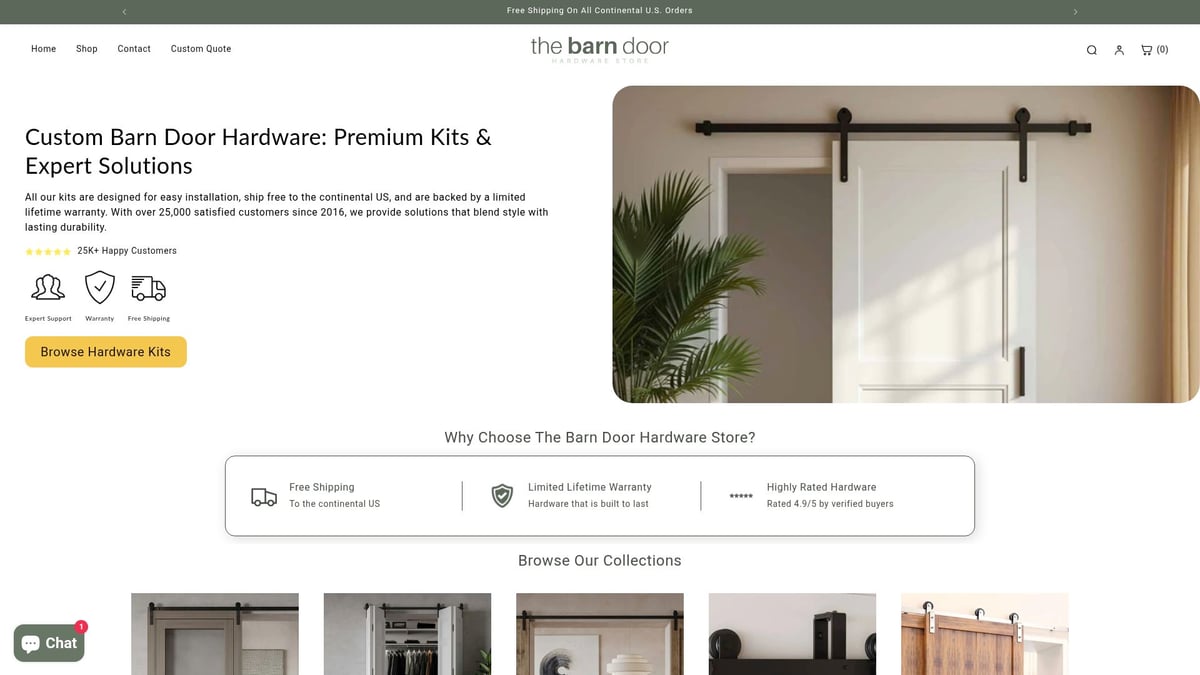
You’ll find custom sizing options, easy-to-follow installation guides, and a team of experts ready to answer your questions. Our hardware comes with a lifetime warranty, and free shipping is available on all orders. With over 25,000 satisfied customers, you can trust you’re getting top-tier sliding door track and hardware for your home or project.
DIY vs. Professional Installation: Making the Right Choice
Should you install your sliding door track and hardware yourself or hire a pro? If you’re handy, have the right tools, and your wall is straightforward, DIY can be rewarding and cost-effective.
Here’s a quick comparison:
| Factor | DIY Installation | Professional Installation |
|---|---|---|
| Cost | Lower | Higher |
| Time | Longer | Faster |
| Skill Level | Moderate | Expert |
| Best For | Simple jobs | Large/custom doors |
If you’re dealing with heavy doors, structural issues, or want guaranteed results, calling an expert is wise. Weigh your comfort level and the complexity of your sliding door track and hardware project before deciding.
Additional Resources and Inspiration
Want more guidance for your sliding door track and hardware journey? Explore installation videos on YouTube, check out design galleries from top manufacturers, and join support forums for real-life advice.
Browse leading blogs, like those offering Best Practices for Patio Door Installations, to see common challenges and smart solutions. For inspiration, look at before-and-after showcases to spark ideas for your own space.
With the right sliding door track and hardware, expert advice, and a bit of creativity, you can elevate any room and enjoy lasting results.
So, now that you’ve got the inside scoop on choosing, installing, and maintaining sliding door tracks and hardware, are you itching to start your own project? Whether you’re dreaming of a modern upgrade or a classic barn door look, having the right hardware makes all the difference. I’ve seen so many people transform their spaces just by swapping out those outdated doors! If you’re ready to take the next step, why not check out The Barn Door Hardware Store? Their expert team’s been helping folks like us since 2016, and with free shipping and a lifetime warranty, it’s a win all around.
